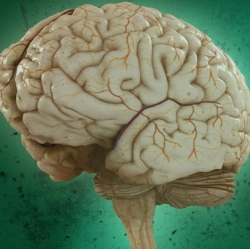
Diagnosing glioblastoma brain cancer is a real challenge for neurologists because they are deep in the brain and hard to test for. Now there’s a promising new solution.
A novel miniature diagnostic platform using nuclear magnetic resonance (NMR) technology that can detect minuscule cell particles known as microvesicles (shed by cancer cells) in a drop of blood has been developed by investigators at the Massachusetts General Hospital (MGH) Center for Systems Biology (CSB).
Background
Glioblastoma multiforme (GBM) is the most common and most aggressive brain cancer in humans. By the time it is diagnosed, patients typically have less than 15 months to live. One of the biggest challenges with this condition is accurate disease monitoring to establish whether patients are responding to treatment.
Currently, the only way to diagnose and monitor GBM is with biopsies and imaging tests, making long-term treatment monitoring difficult, invasive and impractical. To address this need, the CSB team sought to develop a simple blood test that could be used to easily monitor disease progression.
“About 30 or 40 years ago, people noticed something in the bloodstream that they initially thought was some kind of debris or ‘cell dust’,”explains Hakho Lee, PhD, of the CSB, and co-senior author of the study with Ralph Weissleder, MD, PhD, director of the CSB. “But it has recently become apparent that these vesicles shed by cells actually harbor the same biomarkers as their parent cells.”
Circulating tumor cells (CTCs) were thought of as a potential key to improved cancer diagnosis, but the problem with CTCs is that they are extremely rare, Lee says, “so finding them in the blood is like trying to find a needle in a haystack. Microvesicles on the other hand are abundant in the circulation and, unlike CTCs, are small enough to cross the blood/brain barrier, which means that they could be used to detect and monitor brain cancers.”
“The issue with microvesicles, however, is that they are very small, so there are not many technologies out there that can detect and molecularly profile them,” explains Lee. “That is where our new technology comes in.”
